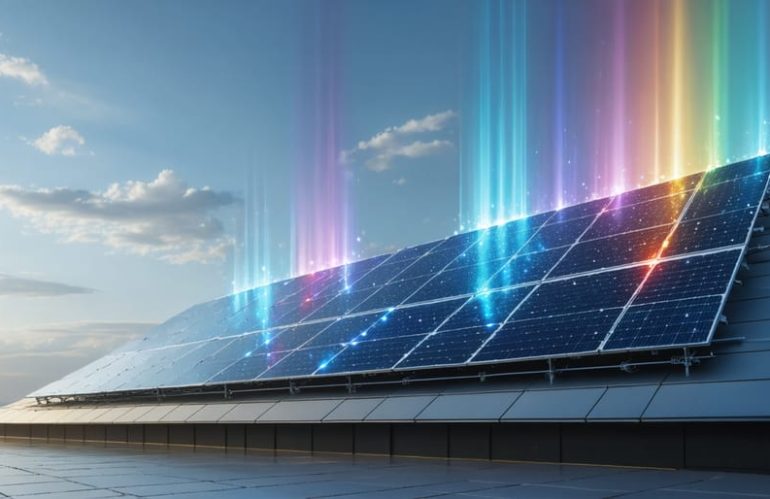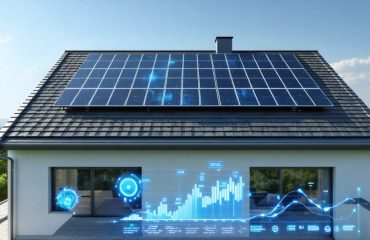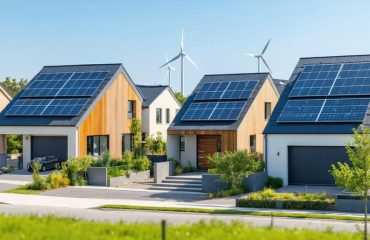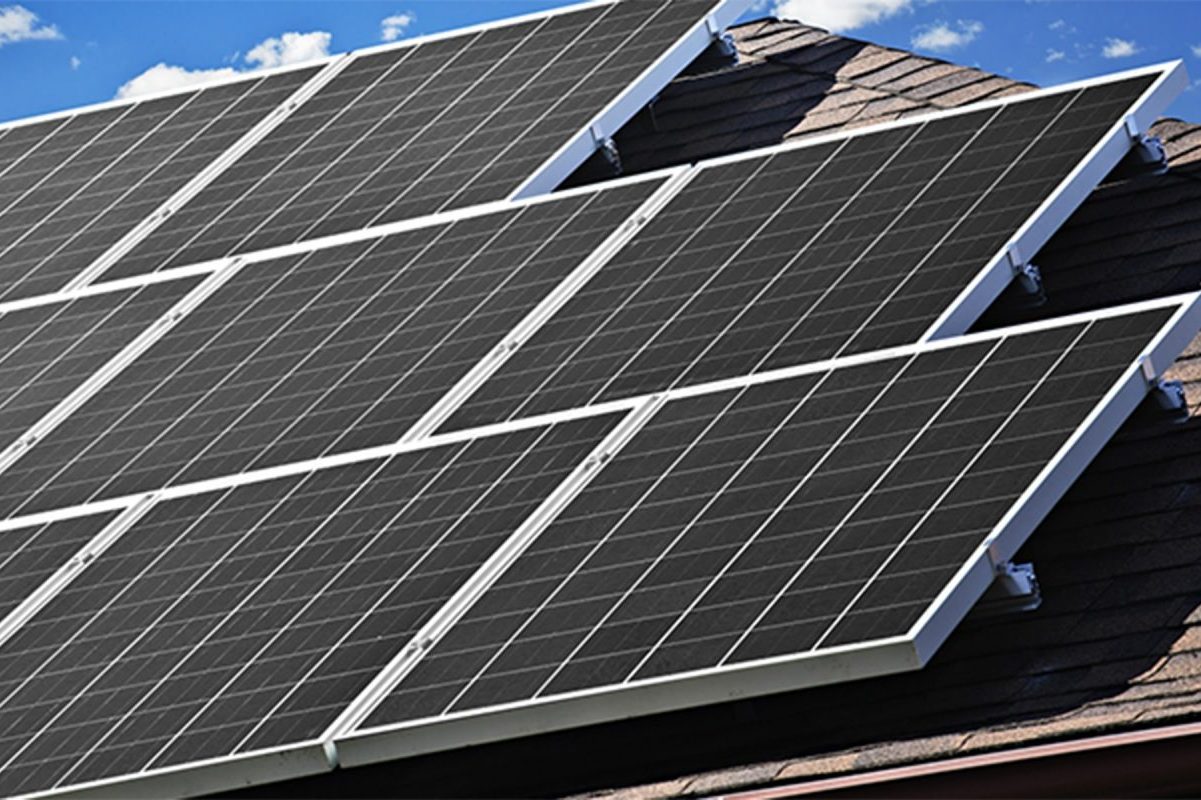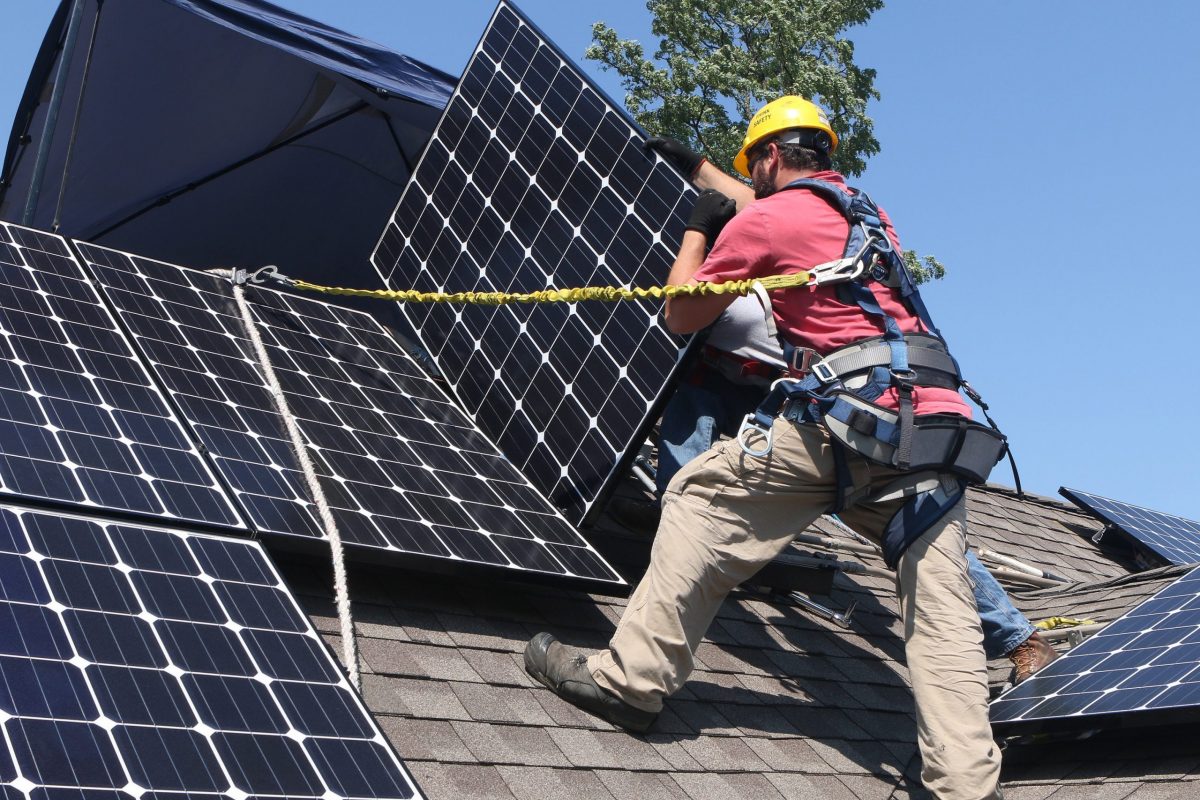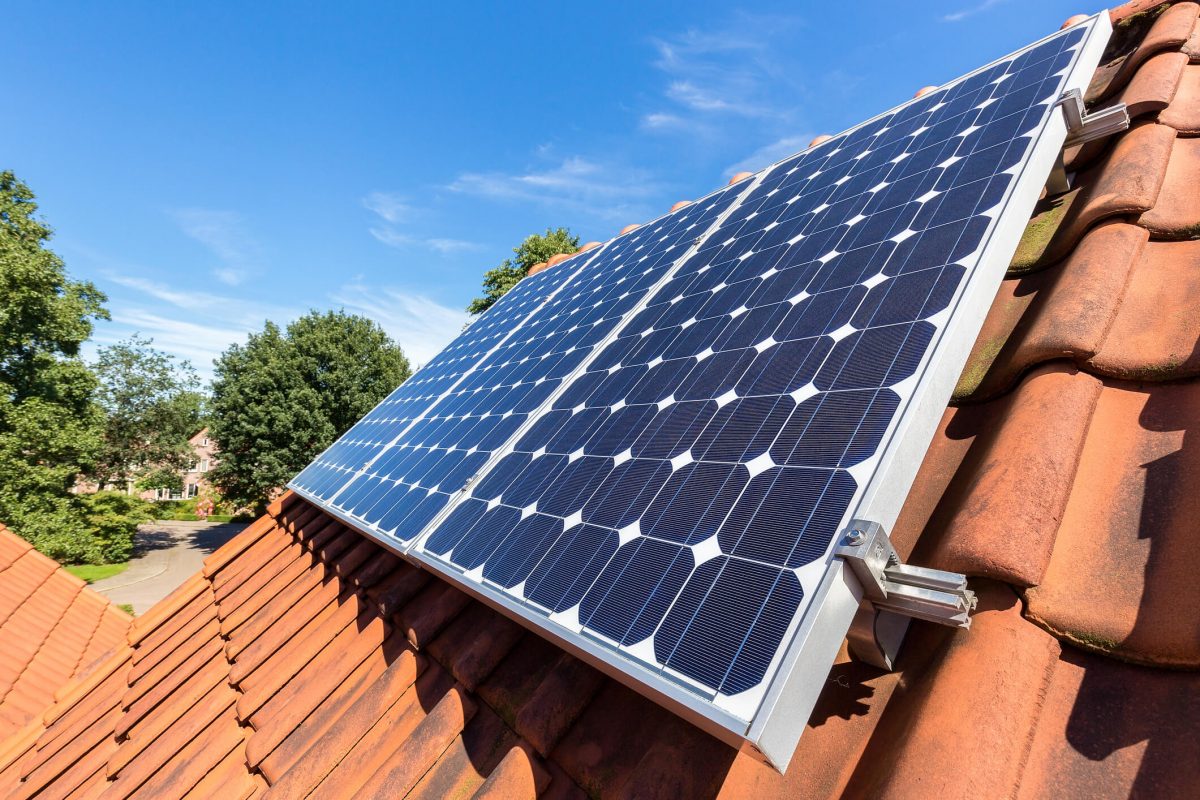Quantum solar panels represent a groundbreaking leap forward in renewable energy technology, promising to revolutionize how we harness the sun’s power. By leveraging quantum mechanics at the nanoscale level, these next-generation panels can capture and convert solar energy with unprecedented efficiency, potentially generating up to 50% more electricity than traditional photovoltaic cells. While conventional solar panels typically convert 15-20% of sunlight into usable energy, quantum-enhanced systems push these boundaries by capturing previously unused light wavelengths and transforming them into electrical power.
For homeowners looking to maximize their solar investment, quantum solar technology offers a compelling glimpse into the future of sustainable energy. These advanced panels not only demonstrate superior durability through enhanced materials and construction but also maintain peak performance even in less-than-ideal conditions, such as cloudy days or indirect sunlight. As manufacturing scales up and technology matures, quantum solar panels are poised to deliver the perfect combination of increased efficiency, improved reliability, and long-term cost savings that environmentally conscious homeowners have been waiting for.
How Quantum Technology Revolutionizes Solar Panel Durability
The Science Made Simple
Imagine tiny particles smaller than a human hair that can capture sunlight more efficiently than traditional solar cells. These particles, called quantum dots, are at the heart of next-generation solar technology. Think of them as microscopic light catchers that can absorb and convert different colors of sunlight into electricity.
Unlike conventional solar panels that typically capture only one specific type of light energy, quantum dots can be tuned to capture multiple wavelengths of light. It’s similar to having a radio that can pick up many stations instead of just one. This means they can work effectively even on cloudy days or when sunlight isn’t directly hitting the panel.
What makes quantum dots special is their size-dependent properties. By adjusting their size during manufacturing, scientists can control exactly which types of light they capture best. This flexibility allows quantum solar panels to potentially convert up to 66% of available sunlight into electricity – a dramatic improvement over traditional panels that typically convert 15-20%.

Real-World Durability Benefits
Quantum solar panels offer remarkable durability advantages that significantly extend their operational lifespan compared to traditional panels. The quantum dot technology creates a more resilient surface that better withstands environmental stressors like extreme temperatures, heavy rain, and hail impact. This enhanced durability means fewer replacements and repairs over time, leading to substantial long-term savings for homeowners.
The quantum structure also provides superior resistance to UV degradation, a common issue that typically reduces conventional panel efficiency over time. Laboratory tests have shown that quantum-enhanced panels maintain their performance levels up to 20% longer than standard panels under identical conditions. This translates to more consistent energy production throughout the panel’s lifetime.
Additionally, the quantum layer helps prevent micro-cracks and delamination, two major causes of panel failure. The technology’s self-healing properties allow the material to maintain its structural integrity even after minor damage occurs. For homeowners, this means fewer maintenance concerns and more reliable energy production year after year. The increased durability also typically results in longer manufacturer warranties, offering additional peace of mind for your investment.

Weather-Resistant Features of Quantum Solar Panels
Superior Heat Management
One of the most impressive features of quantum solar panels is their exceptional ability to maintain performance in high temperatures. Traditional solar panels typically lose efficiency as temperatures rise, but quantum technology addresses this common challenge through innovative heat management solutions.
The secret lies in the quantum dots’ unique molecular structure, which helps dissipate heat more effectively than conventional solar cells. This advanced design allows the panels to maintain optimal efficiency even during the hottest summer days. Think of it as having a built-in cooling system at the molecular level.
What makes this particularly valuable for homeowners is the consistent energy production throughout the year. While traditional panels might see efficiency drops of 10-25% during heat waves, quantum solar panels maintain their performance with minimal loss. This translates to more reliable energy generation and better savings on your electricity bills, especially during peak summer months when air conditioning demands are highest.
Additionally, this superior heat management extends the overall lifespan of your solar installation, protecting your investment for years to come. The reduced thermal stress means fewer components are likely to fail due to heat-related damage.
Enhanced UV Protection
One of the most impressive features of quantum solar panels is their enhanced resistance to UV radiation, which significantly extends their lifespan compared to traditional solar panels. The quantum dot layer acts as a protective shield, preventing the harmful effects of prolonged sun exposure that typically cause solar panels to degrade over time.
Traditional solar panels can lose up to 20% of their efficiency within the first 25 years due to UV damage. However, quantum solar panels utilize advanced nano-materials that naturally resist UV degradation, maintaining their peak performance for longer periods. This improved durability means homeowners can expect consistent energy production throughout the system’s lifetime.
The enhanced UV protection comes from the quantum dots’ unique molecular structure, which absorbs and converts harmful UV rays into usable energy instead of allowing them to damage the panel’s components. This not only protects the panels but also improves their overall efficiency by harnessing a broader spectrum of solar radiation.
For homeowners, this translates to better long-term value, reduced maintenance costs, and more reliable energy production year after year. The improved UV resistance also means these panels maintain their appearance better, preserving your home’s aesthetic appeal while delivering sustainable energy.
Cost vs. Long-Term Value
Initial Investment Explained
While quantum solar panels represent a significant technological leap forward, they do come with a higher initial investment compared to traditional solar panels. On average, quantum solar panels cost 30-40% more upfront, with typical residential installations ranging from $25,000 to $35,000 before incentives. However, this price difference is offset by their superior efficiency and longer lifespan.
Traditional solar panels typically cost between $15,000 and $25,000 for a complete home installation. The price premium for quantum panels reflects their advanced materials and manufacturing processes. But here’s the good news: just like conventional panels, quantum solar installations qualify for federal tax credits, state incentives, and local rebates, which can significantly reduce your out-of-pocket expenses.
When considering the long-term value, quantum panels often prove more cost-effective. Their higher energy conversion rates mean you’ll need fewer panels to achieve the same power output, potentially reducing installation costs. Additionally, their enhanced durability and longer lifespan – typically 30-35 years compared to traditional panels’ 25-year lifespan – provide better value over time through reduced maintenance and replacement costs.
Long-Term Financial Benefits
Investing in quantum solar panels offers substantial financial returns that extend well beyond the initial installation costs. While traditional solar panels already provide long-term savings with solar panels, quantum technology amplifies these benefits significantly. Homeowners typically see a complete return on investment within 5-7 years, compared to 8-10 years with conventional panels.
The enhanced efficiency of quantum solar panels means you’ll generate more electricity with the same roof space, potentially increasing your energy savings by up to 40% compared to traditional panels. Maintenance costs are also notably lower, as quantum panels require less frequent cleaning and have fewer components that can fail over time.
These panels maintain their peak performance longer, with an estimated efficiency degradation of only 0.3% per year compared to the industry standard of 0.8%. This translates to better energy production and higher savings throughout their 30+ year lifespan. Additionally, many homeowners report increased property values, with quantum solar installations adding an average of 4-6% to home resale values.
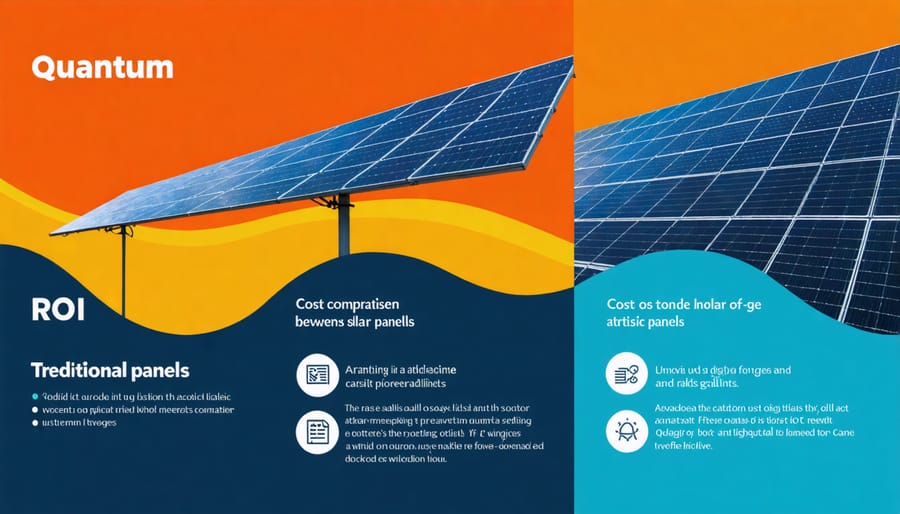
Making the Switch: What Homeowners Need to Know
Making the switch to quantum solar panels is simpler than you might think, and the benefits make the transition worthwhile. Start by having a professional solar installer assess your roof’s condition and orientation to ensure optimal energy capture. Most quantum solar installations can be completed within 2-3 days, causing minimal disruption to your daily routine.
The upgrade process typically begins with removing existing panels if you already have them. Your installer will then reinforce your roof structure if needed and install the new mounting system designed specifically for quantum panels. Because these panels are more efficient, you’ll likely need fewer units to achieve the same or better power output than traditional panels.
Cost considerations are naturally a key factor. While quantum solar panels have a higher upfront cost compared to conventional panels, they typically pay for themselves faster due to their superior efficiency. Many homeowners report breaking even within 4-6 years, compared to 7-10 years with traditional panels. Various financing options, including solar loans and lease programs, can help make the transition more affordable.
Before installation, check local building codes and obtain necessary permits. Many municipalities have streamlined the approval process for solar installations, but requirements vary by location. It’s also worth investigating available tax incentives and rebates, as many regions offer special programs for advanced solar technology adoption.
Remember to update your home insurance policy to cover your new installation and consider scheduling regular maintenance checks to ensure optimal performance. Most quantum solar panels come with comprehensive warranties of 25 years or more, providing peace of mind for your investment.
Quantum solar technology represents a remarkable leap forward in renewable energy, offering homeowners unprecedented opportunities to maximize their solar investment. By harnessing quantum mechanics principles, these advanced panels can capture up to 44% more sunlight than traditional solar systems, translating to significant energy savings and reduced utility bills.
As research continues and manufacturing processes become more streamlined, we can expect quantum solar panels to become increasingly affordable and accessible to homeowners. Industry experts predict that within the next five years, these systems could become the new standard for residential solar installations, offering enhanced durability and improved performance even in less-than-ideal weather conditions.
The future of quantum solar technology looks particularly bright, with ongoing developments in quantum dot engineering and novel materials promising even greater efficiency gains. For environmentally-conscious homeowners, these advances mean more sustainable energy production with a smaller carbon footprint. As we move toward a greener future, quantum solar panels stand at the forefront of renewable energy innovation, offering a powerful solution for both environmental stewardship and energy independence.

